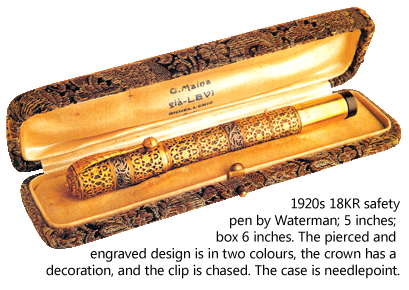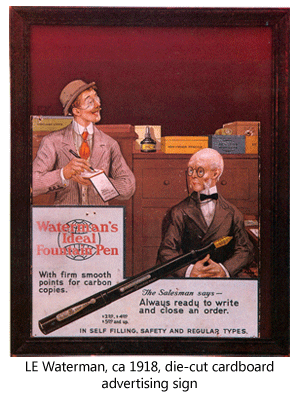- Prelude
- Editorial
- A Conversation with Jagdish Swaminathan
- Seeing is Very Important………
- Tormented Delineations and Violent Deformations
- Bikash Bhattacharjee: Subverting the Seen
- Bridging Western and Indian Modern Art: Francis Newton Souza
- Contesting National and the State: K K Hebbar's Modernist Project
- The Allegory of Return into the Crucial Courtyard
- Knowing Raza
- The Old Story Teller
- Beautiful and Bizarre: Art of Arpita Singh
- Feeling the Presence in Absence! Remembering Prabhakar Barwe
- Waterman's Ideal Fountain Pen
- Peepli Live: the Comic Satire Stripping off the Reality of Contemporary India
- Age of Aristocracy: Georgian Furniture
- Faking It - Our Own Fake Scams
- Scandalous Art and the “Global” Factor
- The Composed and Dignified Styles in Chinese Culture
- Visual Ventures into New Horizons: An Overview of Indian Modern Art Scenario
- The Top, Middle and Bottom Ends
- Top 5 Indian Artists by Sales Volume
- What Happened and What's Forthcoming
- The Month that was
- NESEA : A Colourful Mosaic
- Mumbai Art Sighting
- Art Events Kolkata
- Musings from Chennai
- Art Bengaluru
- Khoj, Kolkata Boat Project
- What a Summit!
- Ganesh Haloi at Art Motif
- The Other Self by Anupam Sud at Art Heritage, New Delhi
- Baul Fakir Utsav at Jadavpur
- Printmaking Workshop
- World's Greatest Never Before Seen Toy and Train Collection
- Previews
- In the News
- Christies: Jewellery Auction at South Kesington, London
ART news & views
Waterman's Ideal Fountain Pen
Volume: 3 Issue No: 13 Month: 2 Year: 2011
by Anurima Sen
Lewis Edson Waterman was a man of common sense, and it was this common sense, unhindered by any kind of acute scientific learning or other such trappings that helped him design his first fountain pen in his late forties. Applying the principle of capillarity to a fountain pen he had designed out of hickory wood, he solved the problem of ink flow in the pen. This was the turning point of Mr Waterman's life- the gentle and respected life-insurance seller became a pen-maker. The earliest purchase was made by one of his prospective clients, and Mr Waterman assured him that if anything should go wrong with the pen he would either put it right or make him another one.
The earliest purchase was made by one of his prospective clients, and Mr Waterman assured him that if anything should go wrong with the pen he would either put it right or make him another one.
The first unassuming office opened its doors at 136 Fulton Street in New York, and Mr Waterman provided all his customers with personal attention and a guarantee that lasted for five years. It has been recorded that Mr Waterman was aggrieved when he could no longer recognize every single customer- because he believed in forming friendships instead of simply establishing a working relationship. His sale continued increasing, from two hundred pens a year to five hundred pens the next- but, Mr Waterman hardly had an inkling of a future when the whole world would be clamouring for a Waterman's pen. The visionary who cajoled Mr Waterman into expanding his territory was a well known advertising agent, E.T. Howard. Anyone who has read up on the history of this brand would realize that its legacy does not simply lie with its pen making, but also with its rich advertising heritage. Following the advertisement in the Review of Reviews in 1883, Waterman sales shot up unbelievably. When Mr Waterman died in 1901, his pens were already being sold at a rate of a thousand pens per day. According to the founder's last wishes, E.T. Howard was made the director of the company.
The company also included competent men such as William I. Ferris, the inventor of ultra-perfected machines that helped in reducing man powered labour and increased productivity. It was from 1904 that silver and gold overlays became a part of pen barrel and cap designs- a far cry from what had started out as simple hand-crafted pens made from hard rubber. In 1907, the company introduced the popular “safety type pen” which prevented ink spillage and could be carried around in trunks, traveling bags or hand bags. The Ripple rubber pens were introduced in 1923, and they became exceedingly popular because of the exclusive pattern. Made of hard rubber, the colours were unusual and included blue, green, rose, olive and red ripple.
It was from 1904 that silver and gold overlays became a part of pen barrel and cap designs- a far cry from what had started out as simple hand-crafted pens made from hard rubber. In 1907, the company introduced the popular “safety type pen” which prevented ink spillage and could be carried around in trunks, traveling bags or hand bags. The Ripple rubber pens were introduced in 1923, and they became exceedingly popular because of the exclusive pattern. Made of hard rubber, the colours were unusual and included blue, green, rose, olive and red ripple.
The Patrician line, launched in 1929, continues to be one of the most sought after lines till date. Even though initially it came in colours such as Onyx, Emerald, Jet Black, Nacre and Moss Agate- by 1934 it was reduced to three colours Onyx, Moss Agate and Jet. An early model Patrician might be recognized by its riveted pocket clip and solid cap band. The Patrician was noted as Waterman's entry into good looking, high-end plastic pens, with impressive nibs. An advertisement dating back to December 1929 reveals that it was launched at a price of ten dollars, boasted a hand crafted pen point, a precious iridium pen-tip and the patented Waterman's spoon-feed. Waterman's Lady Patricia line was marketed as “graceful, but carries plenty of ink”, and the Patrician line as “Waterman's finest men's pen.” However, the launch of this line coincided with the period of the Great Depression, rendering the Patrician a marketing failure and the line was discontinued in the year 1936. In 1946, Waterman introduced the “1003” - a pen that was quite similar to the Patrician. The Patrician line has been re-launched in 1992, and is now available in both fountain and ball-point models.
In 1936, Waterman introduced the Ink-Vue models, available in Silver, Copper and Emerald transparent colours- and the pump-filling system of this pen rivaled that of Parker's Vacumatic (launched in 1933, displacing the Duofold as Parker's top-of-the-line product). It had a bulb-filler with a bulb compressed laterally with the help of a small lever. The earliest models also include the Waterman globe emblem on metal disks set into both the cap top and barrel end. Later on, the model was redesigned and the cap disk was replaced with a stepped top, inspired by the Art-Deco movement. The entire design of the Ink-Vue model was heavily influenced by the boldness of the Art-Deco movement. While the Patrician line was being phased out in 1936, Waterman decided to release an upscale version of the Ink-Vue in the same year called the DeLuxe Ink-Vue which sported an eye catching triple cap band with milled side bands and a clip with matching milling. The Ink-Vue version of the Lady Patricia was available in a variety of colours, such as Mist, Sunset and Black Lace. In 1939 the 5116 was released, a variant of the Ink Vue model. This pen used a one piece barrel-section assembly, with a screw-in plug at the end. An interesting advertisement in Boys' Life magazine dating back to 1936 depicts a conversation between a father and his son, where the son asks for a “visible ink pen” as his Christmas gift. The pen salesman in the advertisement demonstrates that the pen not only works perfectly but offers a choice among seven different points- “pick the one that fits your style of handwriting best.  Only Waterman's gives you that choice!” Moreover, he states, that even a millionaire's son could ask for no better!
Only Waterman's gives you that choice!” Moreover, he states, that even a millionaire's son could ask for no better!
Another notable model that was popular during 1930-1939 was the Model 94 or No. 94. These pens were available in a variety of colours, though the ones in Moss Agate and Steel Quartz were discontinued in the year 1939. They had standard lever fillers as well as the Ink Vue filler- and the nibs varied accordingly. For the standard lever filler, a Waterman #4 nib was used, while the Ink Vue filler had a Key Hole nib. An interesting pair of sets was released in 1941, called the Nurse Set and the Doctors Set (the larger pens were called so). They were basically white and had a thermometer case to go with the set. As the Christie's website informs, a Waterman's Patrician set dating back to 1929-33 is now estimated at £400 - £600 ($713 - $1,070), while a Waterman's Model 94 (1934-39) is now estimated at £70 - £100 ($125 - $178).
Perhaps the grandest model launched by Waterman was the Hundred Year Pen in 1939. They were streamlined, ribbed, had gold barrel bands and were available in solid colours such as Jet Black, Burgundy Red, Forest Green and Navy Blue. The importance of the Hundred Year Pen lay in its clean break with the past- it completely discarded the Art-Deco influenced colours and lines. The design was futuristic, and was further revolutionized in its 1943 version which came with a smooth barrel and a slip-on gold filled cap. In the same year, Waterman offered a solid 14K gold Hundred Year Pen. The name of this line owed its origins to the hundred-year guarantee that Waterman ink pens offered, but in 1942, the United States Federal Trade Commission questioned these impossible and largely hyperbolic warranty schemes and the company had to rename the series “Emblem”. Apart from the Patrician, the Hundred Year line remains a collector's favourite, mostly because it is rarer than its contemporary models manufactured by Sheaffers or Parker.
mostly because it is rarer than its contemporary models manufactured by Sheaffers or Parker.
The next line that emerged out of the everlasting competition between Parker and Waterman was the Taperite, in 1943. Parker's “51” and Eversharp's Fifth Avenue pens were both innovative and stylish, and other pen makers sought to reproduce these innovations. Waterman's Taperite line initially had two models, which subsequently grew to seven by 1947. Unlike the fully hooded Parker model, the Taperite line was partially exposed. The Corinth Set and the Crusader Set, both heavily advertised in and around 1948, included Taperite modeling.
Waterman was considered so prestigious that Lloyd George signed the Versailles Treaty with a Waterman- commonly called the “Peace Fountain Pen”, a replica of which was given to Princess Mary. This pen was golden and had a short Welsh sentence inscribed on it. Fred Astaire, Charles Lindbergh (the champion swimmer) and Suzanne Lenglen (the tennis player) were all reputed customers of the brand that repeatedly called itself “the daddy of them all”, referring to other fountain pen brands, in advertisements dating back to the 1920s. The Waterman Company was perhaps instrumental in making fountain pens a part of daily life. Students, travelers, soldiers, businessmen, everyone realized the convenience of owning a Waterman's Ideal. An August 1916 advertisement could be quoted in this context: “From making a diamond-set pen for a Persian Prince to a special pen for a court stenographer, the extent to which individuality may be expressed in Waterman's Ideal is limitless. Every Waterman's Ideal is a finished and tested example of the pen-maker's Art.”